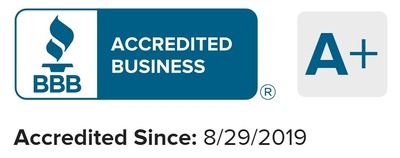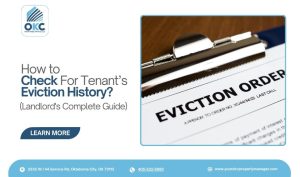Generally, when renting a property, landlords commonly require tenants to provide a security deposit for rent at the start of the lease. This deposit is a refundable amount of money equal to one or two months’ rent. The purpose of the security deposit is to protect the landlord in case the tenant causes damage to the property, fails to pay rent, or breaches the lease agreement.
The landlord and tenant need to understand the security deposit’s terms and conditions, which should be clearly outlined in the rental agreement. Understanding the security deposit’s role in the rental process helps tenants prepare for financial obligations and helps landlords protect themselves from financial loss while renting a property.
According to data from Apartment.com, the median monthly rent in the United States is $1,536 per month as of 2024. Oklahoma has the lowest rent in the state, and the current average rent is $866 per month. The security deposit for these properties can range from $1,536 to $2,000, depending on the local rental market and the landlord’s requirements.
In this article, we will cover the appropriate use of rental security deposits, how they should be held, and how they should be distributed when the tenant moves out. Rental Security deposits are addressed in the Oklahoma Landlord-Tenant Act. The requirements of that act are presented herein.
What is a Security Deposit for Rent
A security deposit for rent is a refundable sum of money, typically equal to 1-2 months’ rent, that a tenant pays to a landlord before moving into a rental property. The landlord must keep this rental deposit in an interest-bearing account. As a practical matter, security deposit amounts in the OKC metro area are approximately one month of rent. The OKC Home Realty approach is to make the security deposit slightly different than one month of rent. So the Tenant is less inclined to view it as the last month of the rent. In fact, our lease provides that the security deposit is an offset against damage to the property and can also be used to offset unpaid rent by the tenant.
In order for the tenant security deposit to be used for this purpose, we also have the following:
- Proof of the initial condition of the unit. We have the Tenant complete a move-in list, nothing any. Things that were damaged upon their move-in. We keep that as a record for when they move out. We also take photos of the unit prior to move-in to support that evidence.
- A walk-through inspection of the unit once the tenant moves out. We also must provide a reasonable estimate of the repair cost that will be charged.
OKC Home Realty collects the security deposit or rental application fee at the time at which the future/ prospective tenant places their application for a rental unit on the property. We have them enter into the security deposit agreement, which states that when we decline the application, we will return their security deposit. But if we approve their application and the tenant later changes their mind about the unit, They will forfeit the security deposit. The security deposit then becomes liquidated damages and is credited to the property owner.
What is the Purpose of Rental Security Deposit?
The purpose of a rental security deposit is to safeguard the landlords from financial losses if the tenants fail to meet their obligations during the rental period. It helps assure the landlords of compensation for tenants’ actions and negligence.
The tenant must pay the security deposit upfront before moving into a rental property, making them responsible for rent payment on time and maintaining the property in a habitable condition. Additionally, tenants should be aware that last month’s rent cannot be substituted for the security deposit, and attempting to do so improperly can have legal implications. Tenants are more likely to be more accountable, knowing their deposit will return at the lease’s end. The security deposit amount generally equals 1 or 2 monthly rent.
When is a Security Deposit Due for a Rental?
The security deposit for an apartment is mainly due when the lease agreement is signed and before the tenant moves in. It serves as financial protection for the landlord in case the tenant fails to pay rent or causes damage beyond normal wear and tear.
Key points about when the security deposit is due:
- The deposit is due upfront when the lease is signed and before the tenant moves in.
- Tenants must pay the deposit in a lump sum before occupancy begins, separate from the first month’s rent.
- Landlords may specify payment methods for the security deposit.
- The landlord must place the security deposit in an interest-bearing account according to local laws.
How Do Security Deposits Work in Oklahoma?
After the end of the lease agreement, the tenant has only 6 months to claim back their security deposit from the landlord. The landlord can take that rental security deposit freely if the tenant fails to request it in writing within 6 months.
The landlords must return the security deposit within 45 days of the tenancy end through mail or hand delivery. The security deposit only can be used to pay for any outstanding rent owed, but tenants are still responsible for paying the last month’s rent. The normal wear and tear should not be addressed in it. Landlords can include a provision in the rental agreement that the security fund cannot be used for the previous month’s rent until the tenant vacates the unit.
Are There Any Limits on Rental Security Deposit?
Oklahoma doesn’t limit how much a landlord can charge as a security deposit from the tenant. However, it does limit when it must be returned i.e. 30 days after the tenant moves, and sets other restrictions on the deposit.
In-state of Oklahoma, the landlords must deposit the tenant’s security deposit in a misdemeanor Trust account. This account must be in financial institutions that are insured by the FDIC. The account can bear interest.
Additionally, landlords can also request a pet deposit as an extra fee for renters with pets. This pet deposit can cover damages caused by pets and may differ from the security deposit, with conditions that make it refundable or non-refundable.
The landlord must not try to use the tenant’s security deposit for his or her personal use. Using the tenant’s security deposit for personal use by the landlord with the possible result in up to six months in prison and a fine of up to two times the amount misused
| Title | Limit |
| Security Deposit | No limitation |
| Security Deposit Return | Within 45 Days after moving |
How to Calculate Tenant Security Deposits?
Here are some common strategies for determining the appropriate security deposit amount:

State Laws: Each state has its own laws regarding security deposits for rentals, and landlords should be familiar with the specific regulations in their state.
Monthly Rent: A common rule of thumb is that a security deposit equals one month or more of rent, depending on the state.
Property Amenities: The type and quality of apartment amenities can also affect the security deposit amount.
Competition: Landlords may consider the security deposits of competitive properties when determining the appropriate amount.
Tenant’s Credit Report: Landlords may charge a different security deposit based on an applicant’s credit report, but charging people with children or a tenant with a service animal a bigger deposit is discriminatory. Get to know about what is credit screening.
Here is a formula you can use to calculate the security deposit amount:
Security deposit amount = monthly rent * security deposit percentage
Security Deposit Percentage: This is the percentage of the monthly rent that you want to charge as a security deposit. The typical security deposit percentage is 1 to 2 months’ rent. For example, if the monthly rent is $1,000 and you want to charge a security deposit percentage of 1, the security deposit amount would be $1,000.
Once you have determined the amount of security deposit you want to charge, include it in your lease agreement. This helps to avoid potential misunderstandings or disputes in the future.
Is Security Deposit Rental Income?
No. Security deposit is not a rental income for landlords as it has to be returned to the tenants at the end of the rental agreement unless it is utilized to cover damages. Suppose the tenant breaks the lease by vacating the property early. In that case, the landlord can keep some portion of the security deposit as compensation should be included in the landlord’s income for that year. It is important to consider that security deposits are meant to cover damages to the rental unit during the lease, not as rental income.
When Does Landlord Have to Return the Security Deposit?
The tenant must do the following to obtain their rental security deposit back in full:
- Pay all money due under the lease, including rent late fees, and unpaid maintenance bills.
- Leave the property in the same condition in which they receive it except for normal wear and tear.
- Stay in the property for the full length of the lease. The exception would be a member of the military with orders to go on deployment.
- Provide a 30-day written notice that they are moving.
If these conditions are not met, the tenant will not receive all of their security deposit back.
We want to give the tenant back as much as possible. That’s why we give them a written move-out checklist and guide to explain exactly what they will need to do to get their deposit back.
Once we do the walk-through and access the damages, we provide a written report to the tenant explaining how their security deposit is being distributed. And, we provide them cheque with their portion of the security deposit. We deposit the remaining portion to the owner’s bank account.
Get to know the renters rights in Oklahoma under Landlord-tenant laws.
Can Landlords Deduct Security Deposits?

Yes, landlords can deduct the security deposits in specific terms and conditions outlined in the rent agreement. But the rules and regulations can differ from state. So, it is always advisable for landlords to familiarize themselves with the particular laws and regulations in their state regarding security deposit deductions to ensure compliance. Here are the common deductions that a landlord can make from a security deposit:
Unpaid Rent: A landlord may deduct any due rent that the tenant owes, including last month’s or current month’s rent. Get to know on how to collect unpaid rent after a tenant moves out to minimize your rental financial loss.
Utility Costs: If the tenant is responsible for paying utilities and outstanding utility bills, the landlord may deduct the amount owed from the security deposit.
Property Damage: The cost of repairing any damages by the tenant’s action beyond normal wear and tear (like holes in walls, broken fixtures, damaged appliances, and excessive stains on carpets) can be deducted.
Cleaning Fees: Landlords can deduct the cost of cleaning the rental unit to bring it back to the same level of cleanliness as when the tenant first moved in. This deduction is for cleaning beyond normal wear and tear.
Lease Termination Fees: If the lease agreement includes provisions for specific fees upon lease termination, such as early termination fees, these might be deductible from the security deposit.
Late Fees or Penalties: The landlord can deduct these from the deposit if the tenant incurred late fees or penalties as outlined in the lease agreement.
You May Also Read: Can a landlord keep security deposit for breaking a lease?
Trends in Security Deposit Alternatives
In the expanding rental industry, landlords and tenants are also seeking for new alternatives to traditional security deposits. These options aim to reduce or eliminate specific monetary issues for tenants while still providing landlords with security against potential damages or unpaid rent. Here are some of the most notable trends:
1. Security Deposit Insurance: Security deposit insurance helps tenants to spend 10 to 30 times less than the amount of a rental deposit and pay a small monthly premium instead. In return, the insurance company offers to pay for damages or unpaid rent to a given amount.
This model provides landlords with a safety net, ensuring they are compensated for damages or lost rent without holding a large sum of money from tenants. Similarly, requiring tenants to carry renters insurance offers landlords additional protection against liability and tenant-caused damages.
2. Monthly Payment Plans: It is common for landlords to obtain security deposits with a single payment, but it is now possible as some property owners are allowing for the deposits to be paid in a gradual manner for a given number of months.
Landlords still receive security after reducing the tenancy costs for tenants. This can also lead to reduced vacancy rates because more potential users can afford to occupy the house / move in.
3. Security Deposit Alternatives through Third-Party Services: Various companies are emerging that offer services to replace traditional security deposits. These services often involve a fee paid by the tenant to secure coverage against damages.
Landlords can benefit from reduced administrative tasks, as these services often handle the claims process and ensure compliance with local laws.
4. Last-Month Rent Options: In order to meet this requirement some landlords have resorted to allowing their tenants to pay a portion of their last month’s rent as a security deposit. This can be structured so that the tenant pays a month’s rent in advance, and must be refundable at the time the lease ends.
This method ensures that landlords have funds available for the last month of rent while acting as a security deposit.
5. Lease Guarantee Programs: Some landlords are using lease guarantee programs as financial guarantee in which a third party usually a relative or a company offers to pay / cover the damages or unpaid rent in case the tenant fails to do so.
It offers the landlords an extra form of security without any upfront cash from the tenants.
Conclusion on Security Deposits for Rentals
Understanding security deposits for rent is crucial for both landlords and tenants. For landlords, it’s a way to protect against potential damages and unpaid rent, while for tenants, it’s important to know their rights regarding how and when they can get their deposit back. Both parties can ensure a smooth process by clearly documenting the property’s condition, following legal guidelines, and communicating effectively. If you have any questions or need assistance with security deposits, don’t hesitate to reach out to an OKC Home Realty Service for expert advice and support.
Contact Property Management OKC for any rental management queries. Our standing as one of the best property management companies in Oklahoma City, OK is validated by Expertise. Call us at 14052325800
FAQs on Rental Security Deposits
Why charge a security deposit?
It offsets the possible damages a tenant could cause to a property in Oklahoma.
What is the Oklahoma Law that controls how security deposits can be used to hold?
The Oklahoma Landlord-Tenant Act.
Is it legal for a property owner to spend a security deposit if they are low on funds?
No. The money is supposed to be kept in a trust account because it is the tenant's property until the deposit has been distributed. It is a crime(misdemeanor) punished by a fine and possible jail time.
What's a typical security deposit when renting a house?
A typical security deposit when renting a house is usually the equivalent of 1-2 months' rent. The security deposit is an upfront payment that the landlord holds as a form of insurance against any potential damages or unpaid rent by the tenant. The exact amount can vary depending on factors such as location, landlord preferences, tenant's creditworthiness, and Condition of the rental property.
Are there any state-specific rules regarding security deposits?
Yes, each state has different laws governing security deposits, including maximum amounts, return timelines, and conditions for deductions. It’s important for landlords and tenants to be aware of their state’s regulations.

Author
Scott Nachatilo is an investor, property manager and owner of OKC Home Realty Services – one of the best property management companies in Oklahoma City. His mission is to help landlords and real estate investors to manage their property in Oklahoma.
 (
(









